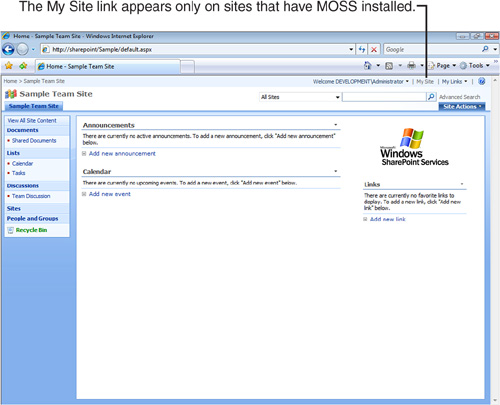There is no way to actually know whether a site is
hosted on a server that has Microsoft Office SharePoint Server (MOSS)
installed by just looking at it. As you learned in the explanation of
Windows SharePoint Services (WSS) and MOSS, the differences are mostly
behind the scenes and are not visible to users. Customizations that your
company might have developed may cause a WSS site to look as if it has
some extensions that come with MOSS or might cause a MOSS site to look
simpler—by removing the MOSS-specific links that would help you identify
a site as MOSS.
There are two things you
can look for in any SharePoint site and be fairly sure that your site
is MOSS or WSS. The first is to look for the My Site link at the top of
the screen. If you have that link, it means you are viewing a site that
is running on a server with MOSS (see Figure 1).
Not having the link does not necessarily mean that the site does not
have MOSS because the administrator can choose to disable that
functionality.

The second way you can
tell is by looking for the Advanced Search link. WSS sites (unless
customized) do not have that link, so having that link means you
probably are viewing a site that is running on a server with MOSS (see Figure 2).
Another related way to test this is to open the search screen (perform a
search) and see whether you have the option from that screen to switch
to advanced search.
